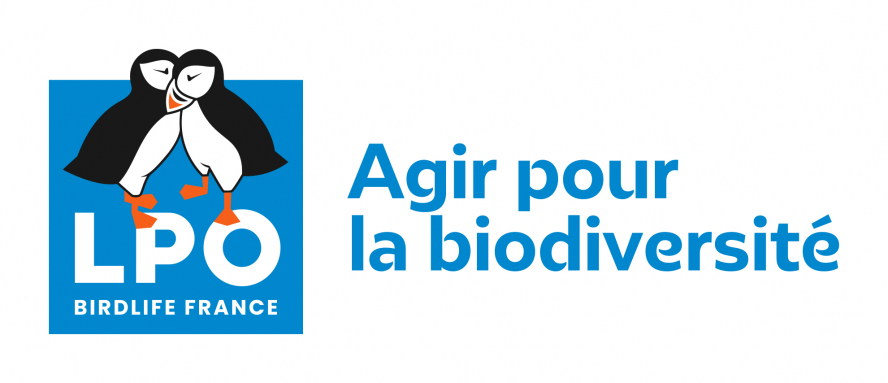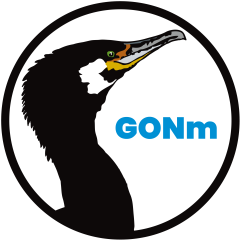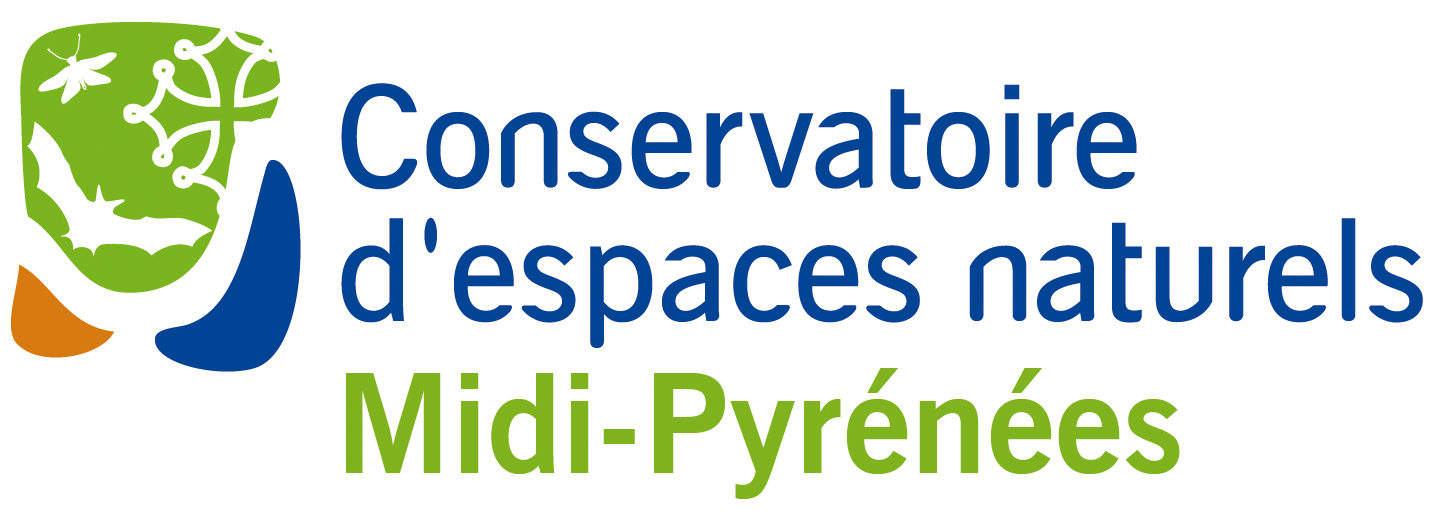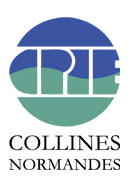- 623 observations
-
218
communes -
97
observateurs
28
organismes -
Première observation
1960 -
Dernière observation
2025
Alençon - Appenai-sous-Bellême - Argentan - Athis-Val de Rouvre - Aubry-le-Panthou - Aunou-sur-Orne - Avernes-Saint-Gourgon - Avoine - Bagnoles de l'Orne Normandie - Barville - Bazoches-au-Houlme - Beaufai - Belfonds - Belforêt-en-Perche - Bellavilliers - Bellême - Bellou-le-Trichard - Berd'huis - Berjou - Boëcé - Boischampré - Boissei-la-Lande - Boucé - Brethel - Bretoncelles - Brieux - Briouze - Bursard - Cahan - Caligny - Carrouges - Ceton - Chailloué - Champcerie - Champosoult - Champsecret - Chaumont - Cisai-Saint-Aubin - Colombiers - Commeaux - Condé-sur-Sarthe - Corbon - Coudehard - Coulmer - Coulonges-sur-Sarthe - Courgeoût - Cour-Maugis sur Huisne - Courtomer - Craménil - Crouttes - Cuissai - Dame-Marie - Durcet - Échauffour - Écouché-les-Vallées - Écouves - Essay - Fay - Ferrières-la-Verrerie - Fleuré - Fontaine-les-Bassets - Francheville - Fresnay-le-Samson - Gandelain - Gâprée - Ginai - Gouffern en Auge - Guêprei - Guerquesalles - Habloville - Hauterive - Igé - Juvigny-sur-Orne - Juvigny Val d'Andaine - La Bellière - La Chapelle-Montligeon - La Chapelle-Souëf - La Chaux - La Ferrière-au-Doyen - La Ferrière-Béchet - La Ferrière-Bochard - La Ferté-en-Ouche - La Ferté Macé - La Fresnaie-Fayel - L'Aigle - Lalacelle - La Lande-de-Goult - La Lande-de-Lougé - La Lande-Patry - Laleu - Landigou - La Roche-Mabile - Le Bouillon - Le Cercueil - Le Grais - Le Mage - Le Ménil-Broût - Le Ménil-Guyon - Le Ménil-Scelleur - Le Ménil-Vicomte - Le Pas-Saint-l'Homer - Le Pin-la-Garenne - Le Plantis - Le Sap-André - Les Champeaux - Les Monts d'Andaine - Les Ventes-de-Bourse - Les Yveteaux - L'Hôme-Chamondot - Loisail - Longny les Villages - Lonlay-l'Abbaye - Lonlay-le-Tesson - Lonrai - L'Orée-d'Écouves - Lougé-sur-Maire - Louvières-en-Auge - Magny-le-Désert - Mantilly - Marchemaisons - Mauves-sur-Huisne - Médavy - Méhoudin - Ménil-Gondouin - Ménil-Hermei - Ménil-Hubert-en-Exmes - Ménil-Hubert-sur-Orne - Merri - Mieuxcé - Montabard - Montmerrei - Mont-Ormel - Montreuil-la-Cambe - Montsecret-Clairefougère - Mortagne-au-Perche - Mortrée - Moulins-la-Marche - Moulins-sur-Orne - Moutiers-au-Perche - Neauphe-sous-Essai - Neauphe-sur-Dive - Neuilly-le-Bisson - Neuville-sur-Touques - Neuvy-au-Houlme - Ommoy - Orgères - Origny-le-Roux - Passais Villages - Perche en Nocé - Pervenchères - Planches - Pointel - Pouvrai - Putanges-le-Lac - Rânes - Rémalard en Perche - Résenlieu - Réveillon - Rives d'Andaine - Roiville - Rouperroux - Sablons sur Huisne - Saint-André-de-Briouze - Saint-Aquilin-de-Corbion - Saint-Aubin-de-Courteraie - Saint-Bômer-les-Forges - Saint-Céneri-le-Gérei - Saint-Cyr-la-Rosière - Saint-Denis-sur-Huisne - Saint-Denis-sur-Sarthon - Sainte-Céronne-lès-Mortagne - Sainte-Honorine-la-Guillaume - Saint-Ellier-les-Bois - Sainte-Scolasse-sur-Sarthe - Saint-Fraimbault - Saint-Georges-d'Annebecq - Saint-Germain-de-Martigny - Saint-Germain-des-Grois - Saint-Germain-du-Corbéis - Saint-Gervais-du-Perron - Saint-Hilaire-de-Briouze - Saint-Hilaire-le-Châtel - Saint-Hilaire-sur-Erre - Saint-Julien-sur-Sarthe - Saint-Lambert-sur-Dive - Saint-Langis-lès-Mortagne - Saint-Léger-sur-Sarthe - Saint-Léonard-des-Parcs - Saint-Mard-de-Réno - Saint-Mars-d'Égrenne - Saint-Martin-du-Vieux-Bellême - Saint-Martin-l'Aiguillon - Saint-Nicolas-des-Bois - Saint-Ouen-de-Sécherouvre - Saint-Philbert-sur-Orne - Saint-Pierre-d'Entremont - Saint-Pierre-des-Loges - Saint-Pierre-la-Bruyère - Saint-Quentin-les-Chardonnets - Saint-Roch-sur-Égrenne - Saint-Sulpice-sur-Risle - Sarceaux - Sées - Sévigny - Sevrai - Suré - Tanques - Tellières-le-Plessis - Tessé-Froulay - Ticheville - Tourouvre au Perche - Trun - Val-au-Perche - Valframbert - Vaunoise - Verrières - Villedieu-lès-Bailleul - Villiers-sous-Mortagne
-
Association Faune & Flore de l'Orne (AFFO)
Participation à 181 Observations
Part d'aide à la prospection : 29.05 %
Fiche organisme
-
PNR et géoparc mondial UNESCO Normandie-Maine
Participation à 137 Observations
Part d'aide à la prospection : 21.99 %
Fiche organisme
-
Muséum national d'Histoire naturelle (MNHN)
Participation à 113 Observations
Part d'aide à la prospection : 18.14 %
Fiche organisme
-
Ministère de la Transition écologique et de la Cohésion des territoires
Participation à 62 Observations
Part d'aide à la prospection : 9.95 %
Fiche organisme
-
Conseil départemental de l'Orne (bureau ENS)
Participation à 47 Observations
Part d'aide à la prospection : 7.54 %
Fiche organisme
-
Société d'études ornithologiques de France (SEOF)
Participation à 45 Observations
Part d'aide à la prospection : 7.22 %
Fiche organisme
-
UMS PatriNat (OFB-CNRS-MNHN)
Participation à 34 Observations
Part d'aide à la prospection : 5.46 %
Fiche organisme
-
Groupe Ornithologique Normand (GONm)
Participation à 34 Observations
Part d'aide à la prospection : 5.46 %
Fiche organisme
-
Habitants-bénévoles
Participation à 31 Observations
Part d'aide à la prospection : 4.98 %
Fiche organisme
-
Conseil départemental de l'Orne
Participation à 19 Observations
Part d'aide à la prospection : 3.05 %
Fiche organisme
-
Système mondial d’information sur la biodiversité (GBIF)
Participation à 19 Observations
Part d'aide à la prospection : 3.05 %
Fiche organisme
-
Naturalia-Environnement
Participation à 19 Observations
Part d'aide à la prospection : 3.05 %
Fiche organisme
-
INTERVIA ETUDES
Participation à 19 Observations
Part d'aide à la prospection : 3.05 %
Fiche organisme
-
Eole Champagne Conlinoise
Participation à 13 Observations
Part d'aide à la prospection : 2.09 %
Fiche organisme
-
Conservatoire d'espaces naturels de Midi-Pyrénées (CEN MP)
Participation à 5 Observations
Part d'aide à la prospection : 0.80 %
Fiche organisme
-
Office Français de la Biodiversité (OFB)
Participation à 4 Observations
Part d'aide à la prospection : 0.64 %
Fiche organisme
-
Thema Environnement
Participation à 2 Observations
Part d'aide à la prospection : 0.32 %
Fiche organisme
-
CPIE Collines normandes
Participation à 2 Observations
Part d'aide à la prospection : 0.32 %
Fiche organisme
-
IEL Exploitation 74
Participation à 2 Observations
Part d'aide à la prospection : 0.32 %
Fiche organisme
-
DREAL Centre-Val de Loire
Participation à 2 Observations
Part d'aide à la prospection : 0.32 %
Fiche organisme
-
SUEZ RV NORMANDIE
Participation à 1 Observation
Part d'aide à la prospection : 0.16 %
Fiche organisme
-
Peter Stallegger (Consultant Environnement)
Participation à 1 Observation
Part d'aide à la prospection : 0.16 %
Fiche organisme
-
Bureaux d'études & consultants
Participation à 1 Observation
Part d'aide à la prospection : 0.16 %
Fiche organisme
-
Ferme éolinne de Germancé à Saint-Ellier-les-Bois
Participation à 1 Observation
Part d'aide à la prospection : 0.16 %
Fiche organisme
Informations espèce
C’est un passereau dont la distribution mondiale est restreinte pour l’essentiel aux pays bordant la Méditerranée. Son aire de répartition couvre néanmoins la majeure partie de la France. Thermophile, il recherche les pelouses sèches parsemées de buissons, les milieux semi-ouverts bien ensoleillés avec arbres et arbustes épars, les paysages de bocage ainsi que les haies plantées pour délimiter les parcs et jardins.
L’alimentation du Bruant zizi est constituée en grande partie de graines, sauf durant la saison de nidification où insectes et autres invertébrés deviennent prépondérants. Les oisillons sont notamment nourris en grande partie d’insectes.
Nos populations nicheuses sont surtout sédentaires, parfois erratiques en période hivernale. Le chant du ♂ est une phrase monotone, constituée d’un seul motif répété, que l’on peut entendre dès la fin de l’hiver ou même en janvier lorsque le temps est clément. Toutefois la saison de nidification ne commence véritablement qu’en avril, pouvant se prolonger jusqu’en août. Une seconde ponte est régulière, et une troisième ponte sans doute plus exceptionnelle.
Le nid est édifié par la ♀ à faible hauteur dans un arbuste ou un buisson. La ponte comprend 3 ou 4 œufs couvés par la femelle. Les oisillons éclosent au bout de 12 ou 13 jours, et sont nourris par les deux parents. Ils prennent leur envol au bout de 11 à 13 jours.
Source : fiche descriptive, INPN
F5 : Maquis, matorrals arborescents et fourrés thermo-méditerranéens
F6 : Garrigues
F7 : Landes épineuses méditerranéennes (phryganes, landes-hérisson et végétation apparentée des falaises littorales)
FA : Haies
FB : Plantations d'arbustes
G2 : Forêts de feuillus sempervirents
G5 : Alignements d'arbres, petits bois anthropiques, boisements récemment abattus, stades initiaux de boisements et taillis
X10 : Bocages
Répartition actuelle en France métropolitaine
© INPN - Avertissement : les données visualisables reflètent l'état d'avancement des connaissances et/ou la disponibilité des données existantes au niveau national : elles ne peuvent en aucun cas être considérées comme exhaustives.
Répartition actuelle dans le monde
Avertissement : les données visualisables reflètent l'état d'avancement des connaissances et/ou la disponibilité des données existantes au niveau mondial : elles ne peuvent en aucun cas être considérées comme exhaustives.



















